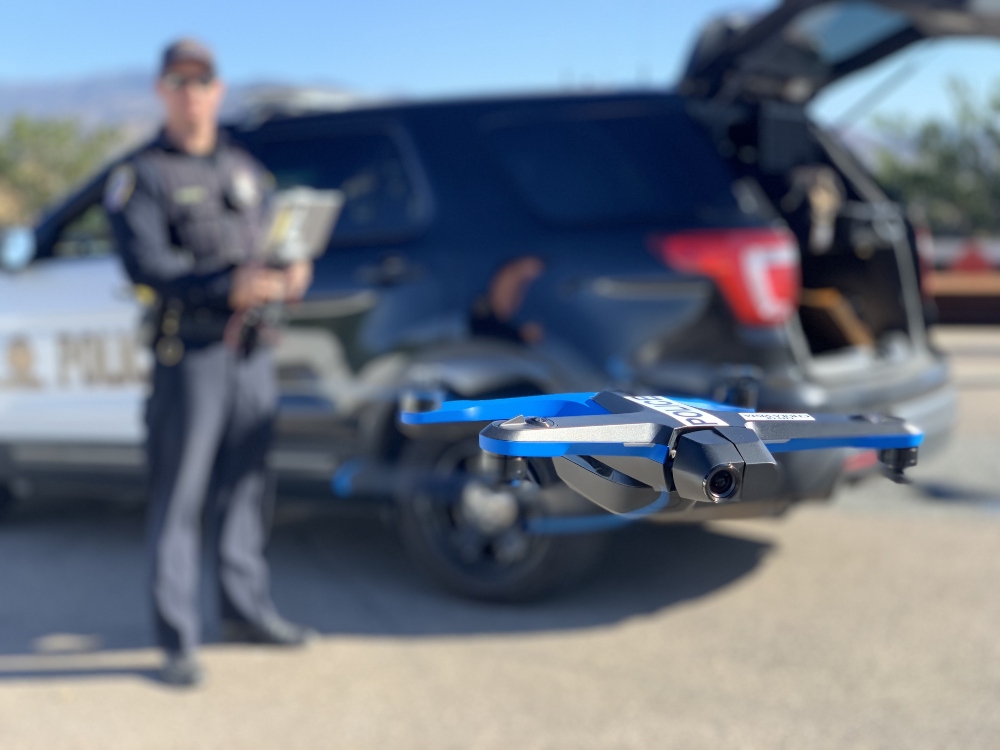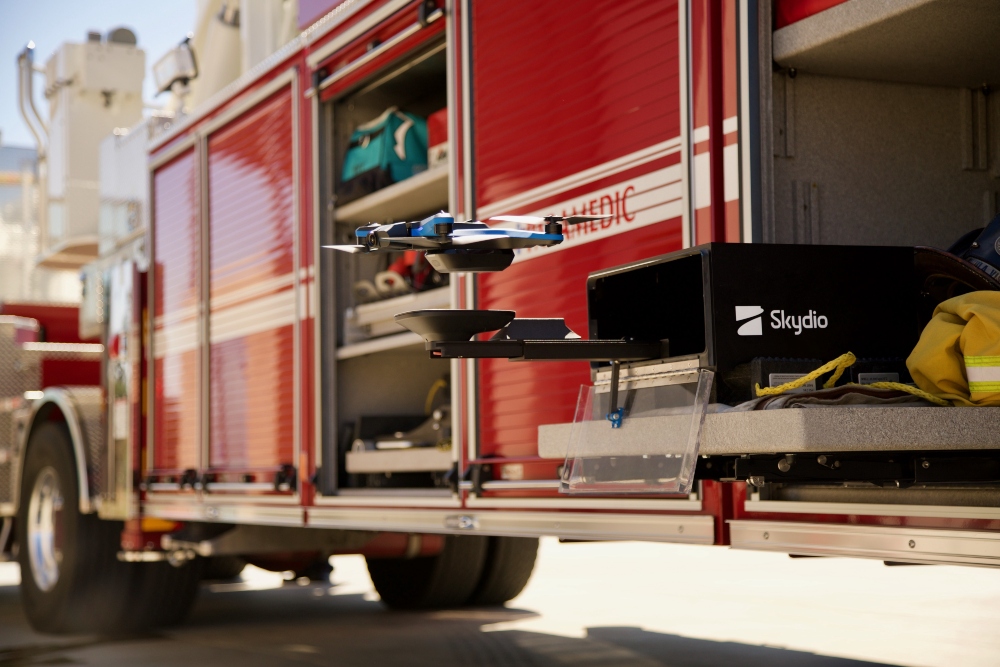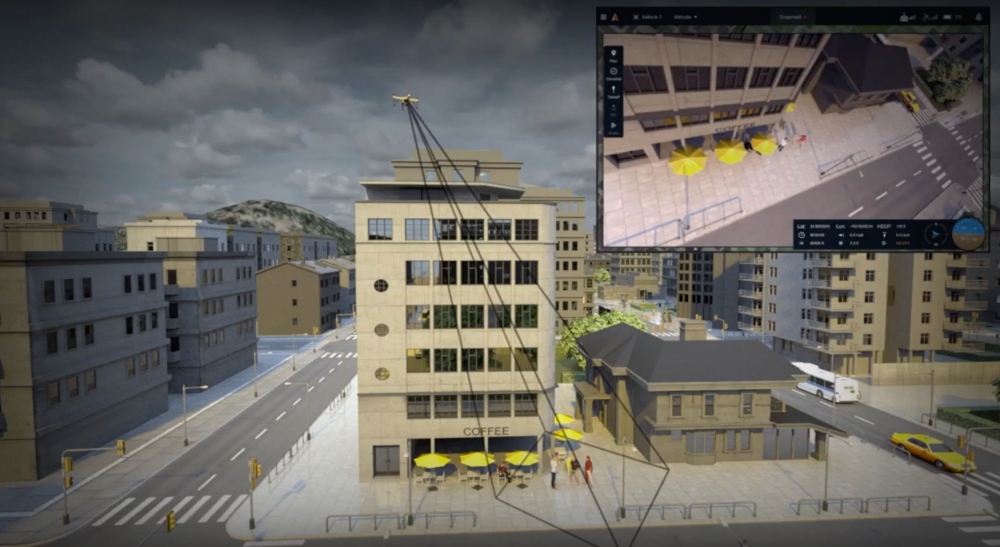Over the last several months we’ve heard a lot of buzz in the drone industry about an imminent ban on DJI drones for government use.
This buzz has its source in the American Security Drone Act of 2019 and ongoing debates at the federal level about whether Chinese drones and drone components might be secretly sharing data with the Chinese government.
One of the biggest concerns about the Act has been that it could single handedly destroy drone programs at U.S. public safety agencies, since a reported 90% of them use DJI drones.

Photo credit: Skydio
In last week’s article, we separated rumor from fact regarding the American Security Drone Act, and addressed the concern that public safety drone programs would have to ground their drone fleets if it passes (they won’t—see the article for a full breakdown of how the Act may or may not impact public safety agencies).
In today’s article, we’re going to take a look at U.S. drone companies that make drones for public safety applications and where they might be headed in the near future.
This article is the second in a three part series on the American Security Drone Act of 2019, U.S drone companies, and the future of the U.S. drone industry.
Can U.S. Drone Companies Compete with DJI in the Public Safety Agency Space?
The statistic we mentioned above about DJI drones and public safety agencies is so striking that it bears repeating: 90% of U.S. public safety agencies use DJI drones.
90%! How do you compete with that?
It turns out that the answer is, well—you don’t.
What we’ve learned through our recent conversations is that many U.S. drone companies aren’t interested in going head-to-head with DJI in the public safety sphere.
But that’s not to say they don’t want to win on their own terms.
Take Matt Sloane. Matt is the CEO of SkyFire Consulting, an Atlanta-based UAS consulting group that works with public safety agencies throughout the U.S.
SkyFire recently acquired a small U.S. drone manufacturing company called Viking UAS, and we wanted to know if he thought they—or anyone else in the U.S., for that matter—could either take on DJI or fill in the gap if DJI drones were suddenly banned.
Matt’s answer was that he wasn’t interested in taking on DJI or replacing them. What he does instead is provide drones built on spec for individual public safety agencies, which is something DJI doesn’t offer.
Prior to acquiring Viking UAS, SkyFire was a drone reseller. Often, SkyFire would be retrofitting consumer drones made by DJI and other companies with special sensors or add-ons to have them do the work a specific police or fire department had requested.
But now he can just make the exact drone an agency wants. If a fire department is looking for a drone with specific features, he can build it to spec, and he can do it at a competitive price point.
A Focus on Specific Use Cases and Applications
People from other U.S. companies we spoke with had a similar perspective about competition with DJI.
Instead of trying to take on the biggest drone company in the world—as companies like 3DR and GoPro have tried to do, with terrible results—they were interested in finding opportunities in public safety that DJI drones just don’t meet.
Fritz Reber, Skydio’s Head of Public Safety Integration, would agree with this assessment.

Photo credit: Skydio
Fritz is a retired Police Captain from the Chula Vista Police Department, where he worked for 27 years. Before he retired, he authored the department’s successful IPP application, which has put the department on the map in the drone industry.
When we asked Frtiz if Skydio wanted to replace DJI’s presence in U.S. public safety agencies he reframed the question, pointing out that Skydio’s drones fit a specific need for public safety agencies—a need DJI drones can’t meet.
That need is the ability to get eyes in the right away—we’re talking under 60 seconds—in sticky situations, when you don’t have an expert drone pilot or large, high-end drone platform on hand, and every second counts.
Skydio’s drones are perfect for these kinds of scenarios because they have a proprietary self-flying system that uses AI to avoid obstacles while the drone is in flight. This means that officers can obtain a quick aerial visualization of a scene without having to be expert pilots.
Also, since they are a lot less expensive than other professional drone options, like DJI’s M210 or its brand new M300 (which run about $6,700 and $8,800, respectively, compared to the Skydio 2’s $999) they present an attractive option for departments with limited funds.

DJI’s New Matrice 300 (Photo credit: DJI)
Wondering how often law enforcement might need to put a drone in the sky that quickly?
Here are some use cases (both real and hypothetical) described in Fritz’s words:
- Car accidents (real use case). There was a car overturned in an area off the side of the road that was inaccessible by foot and it was unclear if there were any victims inside. We needed to be able to fly down at ground level and see what was going on, but there were trees, wires, and other obstacles that would have required a highly experienced drone pilot. The Skydio 2’s self-flying feature allowed us to avoid all the debris and get a look inside the car, at which point we could see that there wasn’t anyone in there and confirm that no one was in danger.
- Finding hidden suspects (real use case). There was a female who had an ice pick and had threatened some people. We suspected she was in the backyard but due to trees, overhangs, and patio covers, we couldn’t see what was happening on the ground with the drone we had in the air. Rather than go in with a dog or on foot, we swapped that drone out for the Skydio 2, which let us fly through some power lines, below the tree line, and along the ground at about head height, allowing us to clear each area before sending in people.
- Locating missing persons (hypothetical use case). If a person is thought to be lost in or near a fast-running river it’s hard to know where they might be—they could be downstream, hanging on to the bank, or underneath trees or brush, and they would be invisible from above using most drones. Normally, you’d wait for a rescue team to staff a boat and go to the center of the river to look towards the banks on either side, which means lost time. But the first or second officer on scene could immediately put up the Skydio 2 and fly safely along the waterline looking for the person, confident the drone won’t crash into low-hanging branches or debris.
Another U.S. drone company with a growing presence among U.S. public safety agencies is Impossible Aerospace.
A striking fact about the company is that it has identified itself with public safety applications since its inception, which presents yet another instance of a U.S. drone company going for a relatively niche (but high value) opportunity rather than a broad, one-size-fits-all approach.
And it looks like DJI may be taking a page out of Impossible Aerospace’s book. Although the Matrice series has historically been marketed as a tool for all kinds of commercial uses cases, with public safety just one of many listed, in its recent launch of the M300 the scope has been narrowed in DJI’s marketing materials to focus primarily on public safety and inspections.
The concept that we really believe in is the drone itself being the first responder. One of the metrics that public agencies are judged by is response time and there’s only so much you can do to speed up response time by having more officers on the ground. But a drone can fly directly to the scene at 50 to 100 miles an hour, enabling 90 second response times to a call.
– Spencer Gore, Founder and CEO of Impossible Aerospace
Impossible Aerospace has continued to double down on its public safety focus. The company recently launched Air Support, a tool made primarily for law enforcement that allows a drone to be deployed as soon as a 911 call comes in, providing enhanced situational awareness as officers make their way to the scene.

Photo credit: Impossible Aerosapce
So if you’re wondering whether U.S. drone companies have a fighting chance when it comes to public safety agencies, we’d say the answer is a strong yes.
Stay tuned for the third article in this series next week, which will look at the consumer U.S. drone market, the U.S. supply chain for drones, and the future of drone production.